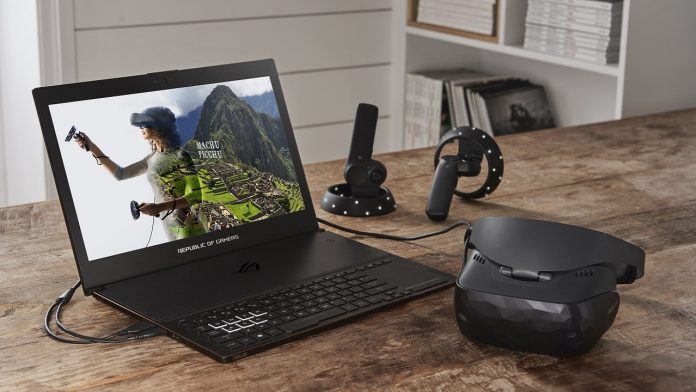Table of Contents:
WMR headsets adhere to a single standard, but each of them has its own characteristics. This information will help you make a choice.
When it comes to Windows Mixed Reality virtual reality headsets, you have to give credit to Microsoft, because instead of becoming a monopolist, the company took a more user-friendly path and created competition within the MR headset market.
Several partner manufacturers have taken the baton and following the main specifications have made their Mixed Reality headsets. In such a situation, users got the opportunity to choose in design, additional options and, not least, in pricing policy.
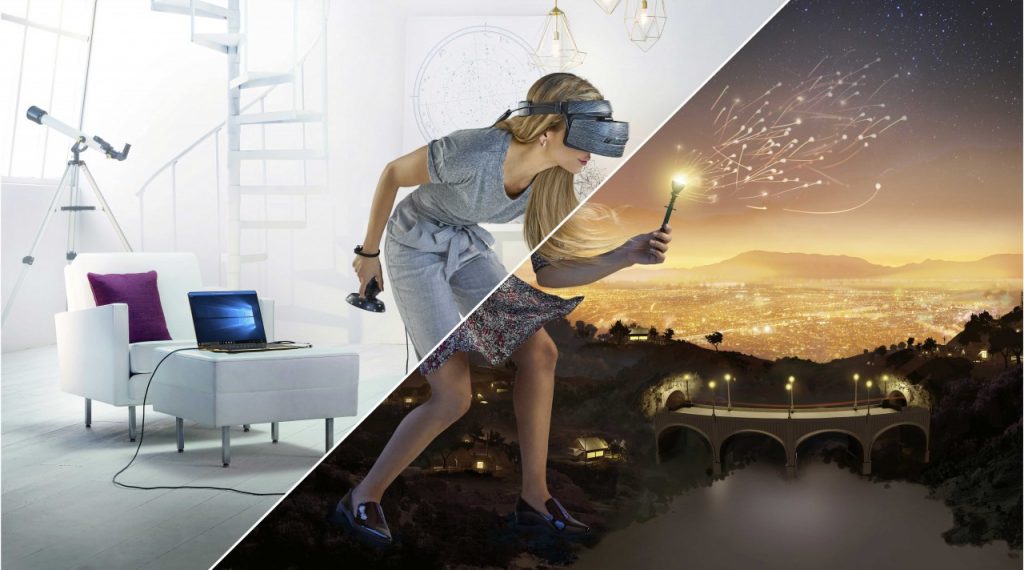
Each of the headsets, thanks to the basic standard from Microsoft, can be fully used to gain access to virtual reality and convey the full potential inherent in applications for it by content developers. But at the same time, each of the models has its own characteristics, designed to give a certain advantage to one manufacturer over others.
Pricing policy and viewing angle (FOV)
In a small digression, it is worth mentioning separately the prices for these devices. In our article, we will rely on those prices that form the real demand and the main competition in the MR market. Namely – the cost of headsets on Amazon.
As for the viewing angle of mixed reality headsets (FOV), we indicated the parameters that are provided on the official websites of the developers. These data do not always reflect the real picture. For example, on the HP website, the viewing angle of their headset depends on the performance of the computer and varies from 90 to 100 degrees. Which is rather dubious and more like misleading.
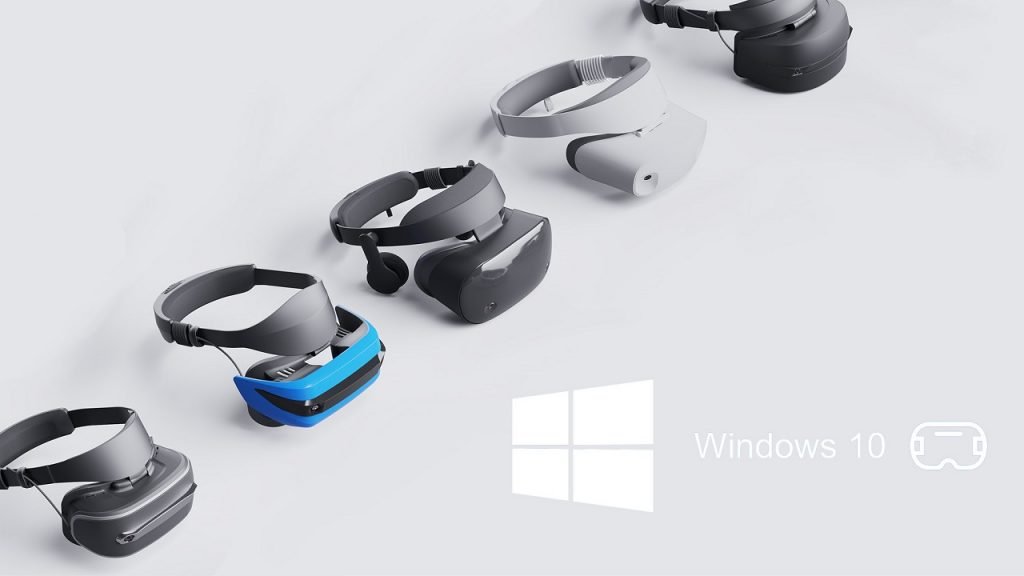
Judging by the experience and feedback of many users, more or less real data is reflected in the specifications of MR headsets from Asus, Samsung and Lenovo. For the rest of the models, you can safely subtract up to 10 degrees from the declared figures.
So, how do different models of Windows Mixed Reality differ from each other.
Features and differences of WMR headsets
Samsung Odyssey HMD
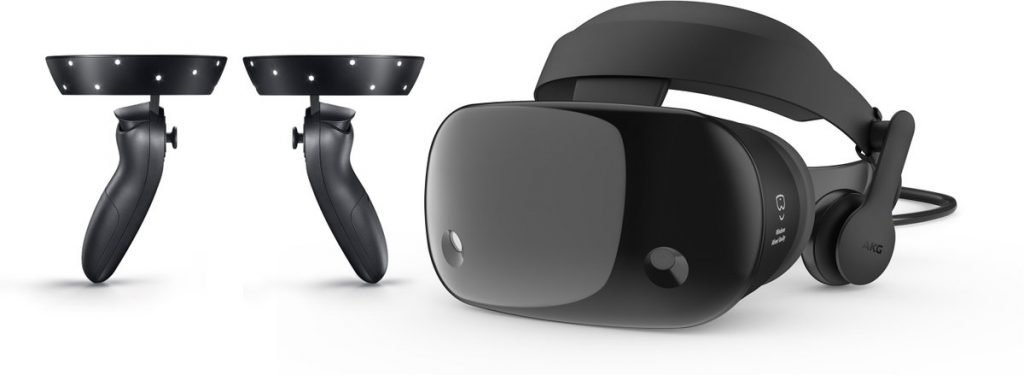
Samsung’s MR headset variant is considered to be a premium headset among other headsets, and for good reason. With the highest resolution and viewing angle, Odyssey is a very controversial MR headset, because it has both undeniable advantages and some limitations.
At $400 – $500 USD, Samsung’s product not only competes with the HTC Vive and Oculus Rift, but outperforms them in some ways. This headset, probably the only one from the line, deserves detailed consideration in a separate article, which you can read at this link – Differences Samsung Odyssey from other Mixed Reality headsets, but the main features are the following.
- The highest resolution and viewing angle
- Built-in sound from AKG
- 2 built-in microphones
- Ability to adjust interpupillary distance
- The controllers included in the kit are more convenient and better than competitors
- Lack of a folding hinge (the helmet cannot be folded up like the rest)
- No 3.5mm audio headset jack
- Display: OLED, 2880 x 1600, 2 x 3.5″, 615ppi
- FOV: 110°
- Refresh rate: 60 – 90Hz
- Sensors: 2 motion detection cameras, gyroscope, accelerometer, magnetometer
- Cable length: 4m
- Weight: 644g
Acer Mixed Reality HMD

Acer MR was one of the first to hit the market and offers all the same basic features as other headsets. It cannot boast of design frills or special comfort in use. However, there are no clearly expressed disadvantages of this headset. Everything is done on a solid four.
What really makes this model viable is its price. The cost of a set of the helmet itself and 2 wireless controllers sometimes drops below $ 200, which makes this product one of the most affordable ways to experience real virtual reality.
- Display: LCD, 2880 x 1440, 2 x 2.89″, 706ppi
- FOV: 100°
- Refresh rate: 60 – 90Hz
- Sensors: 2 motion detection cameras, gyroscope, accelerometer
- Cable length: 4m
- Weight: 440g
Dell Visor VRP100
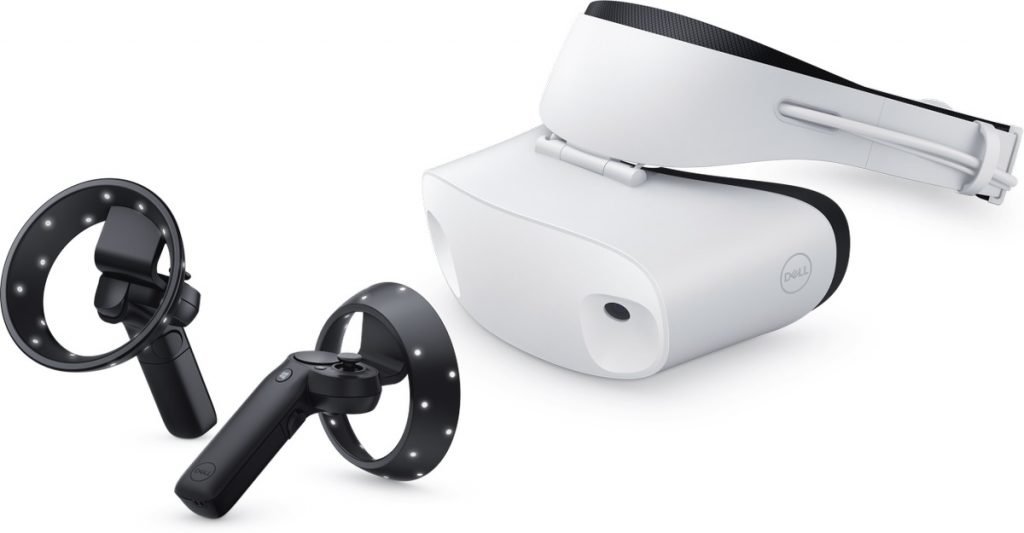
If you are a fan of white gloss and no frills, then you should pay attention to Dell Visor. The headset is made of high-quality plastic, and the pads for the face and on the headband are made of a pleasant to the touch, non-absorbent material. This moment can be very important if the headset will be used by more than one person.
It is worth noting the cable device that goes to the PC. Unlike other models, the cable can be detached from the rim and placed in front of the device. This feature gives some variability in use and can be useful in some cases.
Given the quality of the materials, the Dell helmet costs more than Asus and is in the $300 range.
- Display: LCD, 2880 x 1440, 2 x 2.89″, 706ppi
- FOV: 110°
- Refresh rate: 60 – 90Hz
- Sensors: 2 motion detection cameras, gyroscope, accelerometer, magnetometer
- Cable length: 3m
- Weight: 589g
HP Windows Mixed Reality Headset
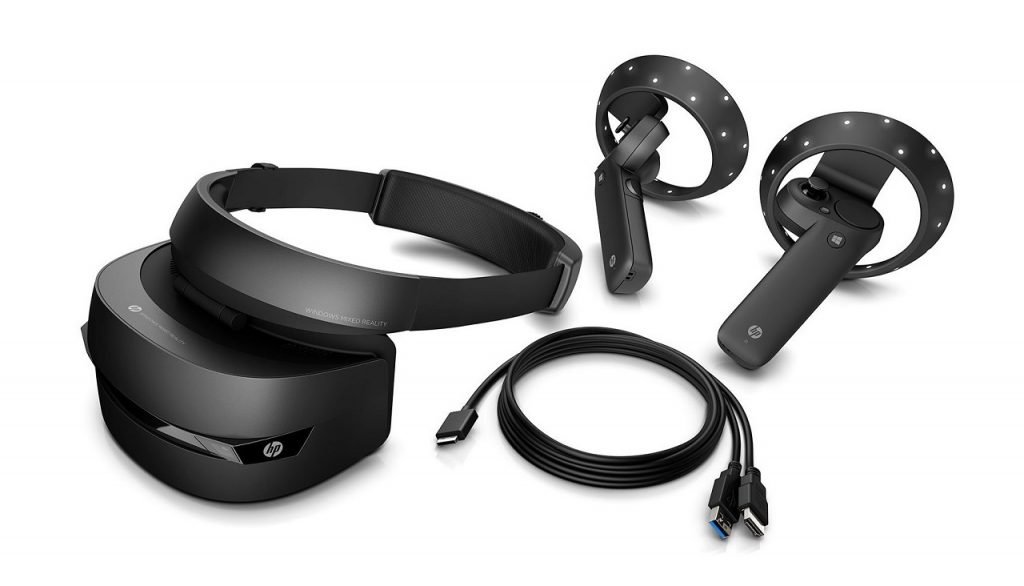
Someone from the developers was clearly inspired by action movies from the 80s when creating the design for this headset. Which, however, does not affect its functionality. But what influences and distinguishes it from other models is the device of the cable and the connector for the microphone and headphones.
Headset from HP, the only WMR that allows you to disconnect the cable from the device. Potentially, this means that you can go beyond the standard length and use longer options if necessary.
The 3.5mm headphone jack is built directly into the headset housing at the front. Such a solution will allow you to position the microphone quite conveniently, but at the same time it will create inconvenience when connecting headphones, for which you will constantly cling to the controllers.
The cost of HP’s MR headset has recently dropped quite a bit to $230 – $250, which also makes it quite a budget VR solution.
- Display: LCD, 2880 x 1440, 2 x 2.89″, 706ppi
- FOV Viewing Angle: 90 – 100°
- Refresh rate: 60 – 90Hz
- Sensors: 2 motion detection cameras, proximity sensor, gyroscope, accelerometer
- Cable length: 4m
- Weight: 834g
Lenovo Explorer
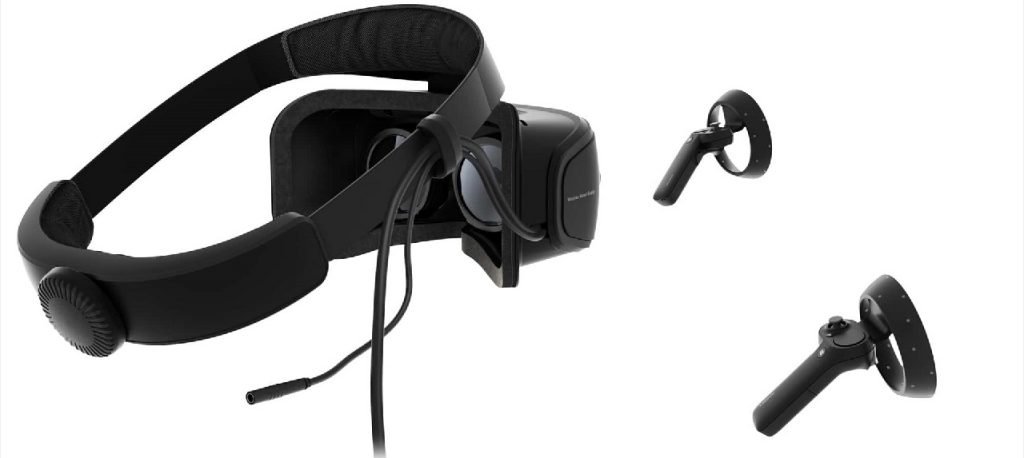
If we compare between MR headsets, then Lenovo, according to a large number of users, is a very successful model. It has one of the widest viewing angles and is inferior in this parameter only to Samsung Odyssey, which is in a completely different price range.
The design of the headset completely repeats the industrial style of Lenovo products and does not catch the eye with bright colors. However, it is made quite qualitatively and has better ventilation of the internal space. For many VR users, it’s no secret that prolonged use can lead to fogging of the lenses, and the better the headset is ventilated, the less problems with the fog effect.
It is this mixed reality headset that many VR enthusiasts recommend in their reviews due to its $250 price tag, build quality, and ease of use.
- Display: LCD, 2880 x 1440, 2 x 2.89″, 706ppi
- FOV: 110°
- Refresh rate: 60 – 90Hz
- Sensors: 2 motion detection cameras, proximity sensor, gyroscope, accelerometer, magnetometer
- Cable length: 4m
- Weight: 380g
ASUS HC102
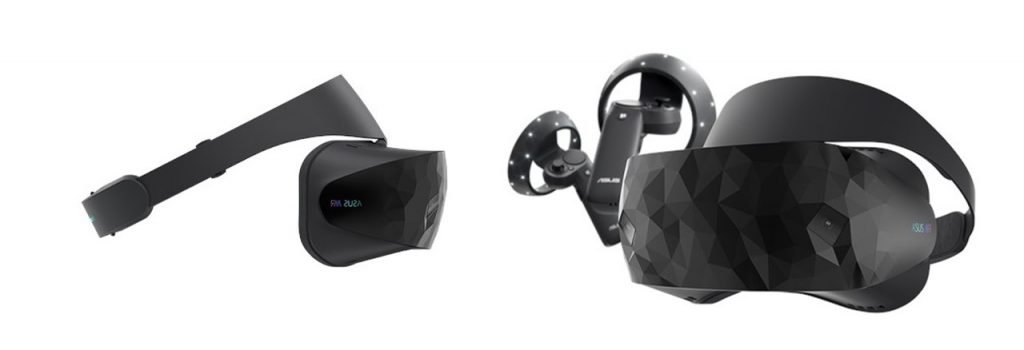
Asus decided to take their time and released their solution for sale later than everyone else. So much later that other manufacturers managed not only to make good sales, but also to reduce prices by more than 2 times.
One of the best MR headsets in terms of design and quality, yet comfortable to use. With a real viewing angle no less than that of the Lenovo Explorer, this headset would have every chance of success, if not for its, to put it mildly, unjustified price tag of $450.
If over time the pricing policy of the company changes, as was the case with other manufacturers, or you are not particularly concerned about the price of the device, then ASUS HC102 can be safely bought.
- Display: LCD, 2880 x 1440, 2 x 2.89″, 706ppi
- FOV: 95°
- Refresh rate: 60 – 90Hz
- Sensors: 2 motion detection cameras, proximity sensor, gyroscope, accelerometer, magnetometer
- Cable length: 4m
- Weight: less than 400g
What do all Windows Mixed Reality headsets have in common?
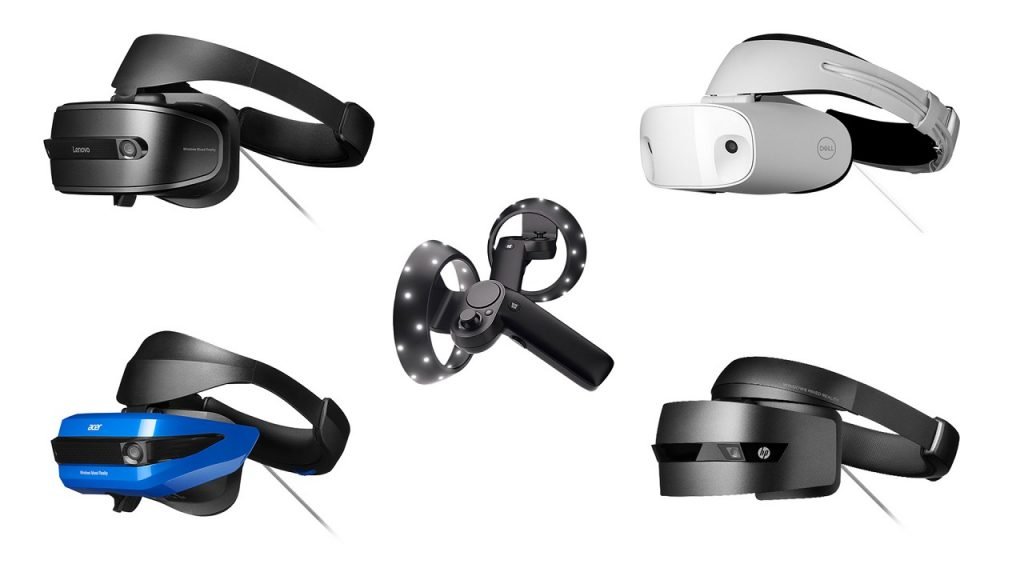
Regardless of which WMR headset you choose, there are a few features that are the same across the line that all models share.
Most importantly, you don’t need external tracking sensors. After a 5-minute calibration, the headset remembers the environment and, using built-in sensors and cameras, tracks its position in space. You can not only view the virtual environment, but also move around it.
All headsets come with wireless controllers. They are identical for all models except Odyssey and are also tracked in space. Considering that the tracking is carried out by the cameras built into the headset, the correct operation of the controllers is guaranteed only when they are in the player’s field of view.
This feature is also common to all WMR headsets – when the controllers leave the field of view of the cameras in the headset, their position is lost and you need to look at them for recalibration. In this regard, WMR is quite outperformed by headsets with external tracking beacons. You also need a Bluetooth adapter to receive a signal from the controllers, which is not included.
Inter pupillary distance (IPD)
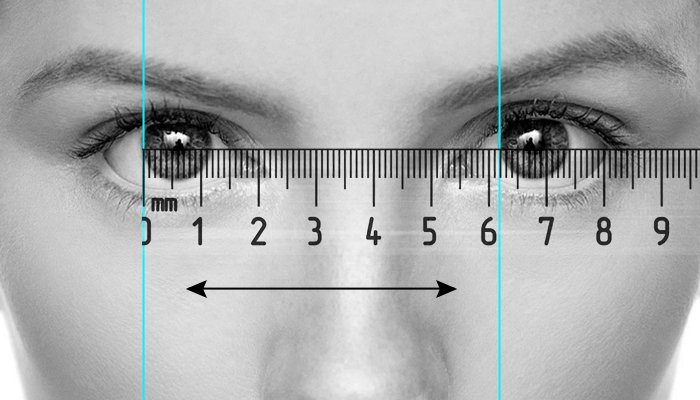
And most likely, one of the most important points when choosing a WMR headset is interpupillary distance. Only Samsung Odyssey allows you to configure it manually, the rest of the headsets are initially set to an average value of 64mm and can only be changed in the 7mm range by software.
Knowing your interpupillary distance when choosing a virtual reality headset is very important, because if it is quite different from 64mm, then you will not be able to clearly focus your eyes on the image and in this case you should consider buying a headset from Samsung, Oculus or HTC, where it is present mechanical adjustment of IPD in a wide range.

